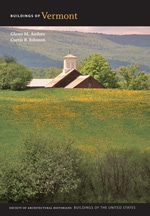
Nestled in the hills between Water Andric and Joe's Brook in the lower Passumpsic River Valley, the Pettengill Farm was first settled after 1785 by Edmond Pettengill of Methuen, Massachusetts. In c. 1810 he built this substantial brick Cape Cod house with twin interior end-chimneys, twelve-over-eight sash windows, and on its north gable end an exposed basement that contained the main kitchen, a common early practice in this area. His sons Edmond and Moses and their ten children continued to farm, and around the time of the Civil War they added a bank barn for cattle and a sugarhouse. By this time the one-hundred-and-fifty-acre farm was diversified with one thousand sugar maple trees and facilities for manufacturing cider. The bank barn was built by Moses's son Peter Pettengill, a carpenter, joiner, and barn builder who lived on the family farm. The barn has a stone and earthen ramp originally accessing its stables and haymow atop a manure-basement story (in the twentieth century the barn was re-sided and adapted for ground stables). The post-and-beam sugarhouse (now with an addition) contains the chimney and a portion of its original brick sugar arch, which was probably uncovered, as was the custom in sugaring before the Civil War. Claims of sugarhouses of an earlier date than this one usually rest on oral tradition rather than datable framing or physical evidence related to the requirements of sugaring. With its fine vernacular brick dwelling, early bank barn, and sugarhouse, the Pettengill Farm is a fine example of a nineteenth-century Vermont hill farm.

